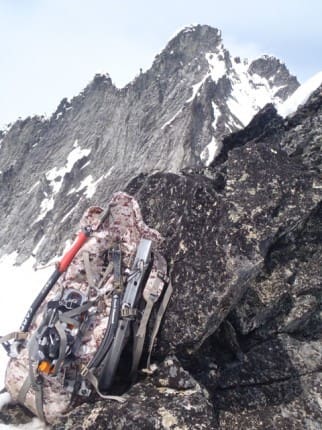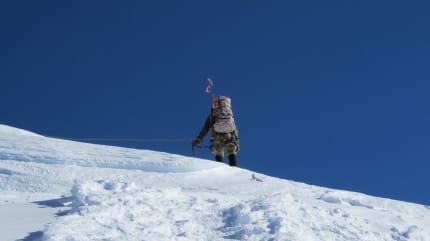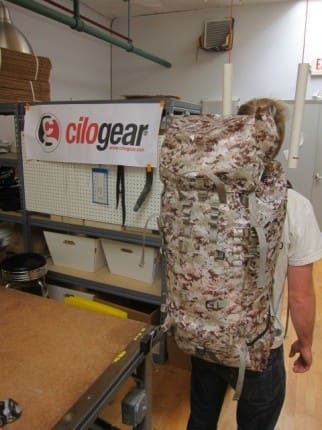At OR everyone asked me about the coolest thing I saw. Granted, I’m a bit jaded, being exposed to new stuff all of the time. I’ve always maintained that the coolest stuff at OR can be found on the fringes and CiloGear is no exception. Well, no exception to that rule, because everything they do is exceptional. Well known within the climbing community Cilo caught the eye of a couple of military climbers. The rest is history being written.
These aren’t mainstream packs that a Grunt is going to use. They are way too specialized for that. For example, you aren’t going to see a pack covered in PALS webbing. If it’s there, it’s there for a reason. These are very specialized tools for a specialized community. Headquartered in Portland, Oregon, CiloGear was started by climbers, for climbers. They build to order and keep waste to an absolute minimum.
Taking this whole philosophy into account, as you can imagine they use some exotic materials to create their packs. Early on I talked about the advantages of Cuben fabric. They’ve embraced the technology and also run with a couple of forms of Spectra.
Take for example this 75L WorkSack. That is a 75 liter beast but when you consider the weight, you ask yourself, “How?” It weighs in at just over 2 lbs.
If you are the right customer, then CiloGear has the right gear for you.
Tags: CiloGear





The problem with Cuben fiber is that it IS NOT durable. Strong yes, but it has no durability. It needs to be bonded to a backer material, otherwise it will disintegrate with just a little outdoor use. It was originally made for use as sail boat sail material in a much thicker lay-up. Sail boat sails need to be strong and not rip in the wind, but they don’t need to be abrasion resistant.
As a long time sailmaker and sailor, I have to disagree. Sails have to be abrasion resistant because they rub against aluminum spreaders, steel shrouds etc… Dacron -which is the most widely used sailcloth- is heavier, but also very abrasion resistant.
Cuben is usually made from spectra fiber, which is probably the lightest, most abrasion resistant stuff out there. If you do manage to get a tear in it though, it doesn’t expand.
From what I’ve seen, you’re both right. At sailcloth weight and bonded to other materials, the abrasion resistance is decent. At lightweight pack weights, I’ve seen it nearly disintegrate, like crumble, after a single use. But, perhaps these users don’t have a durability requirement and can replace their pack after a few missions. It is amazing how many people are spellbound by the dyneema/spectra fabric though.
“Take for example this 75L WorkSack. That is a 75 liter beast but when you consider the weight, you ask yourself, “How?†It weighs in at just over 2 lbs.”
Simple. That’s just the bag. The weight looks better if you list it separately for each part of the pack.
pack bag: 1100g / 39 oz. Hipbelt: 125g / 5 oz. Lid: 170g / 6 oz. Full Strap Kit: 220g / 7oz Framesheet, pad & carbon stay: 600 g / 21 oz.
Sure, it’s rather light, but not remarkably. Compare eg. to Kifaru KU5200, which actually is ultra light. And is a pack of comparable capacity.
Fwiw- i’ve been using Cilogear packs since the beginning, and i’m still on my second pack of theirs- a 2nd generation pack that replaced the first only because i got it as a review piece. The pack is still going strong.
I’ve seen first hand what the Dyneema packs by Cilogear can stand up to- and it is well over 190 days in the mountains- and those were the first gen prototypes. The new stuff? Who knows- longer for sure. Will the military go through theirs faster than a civilian? Absolutely- but it will still last much longer than you think.